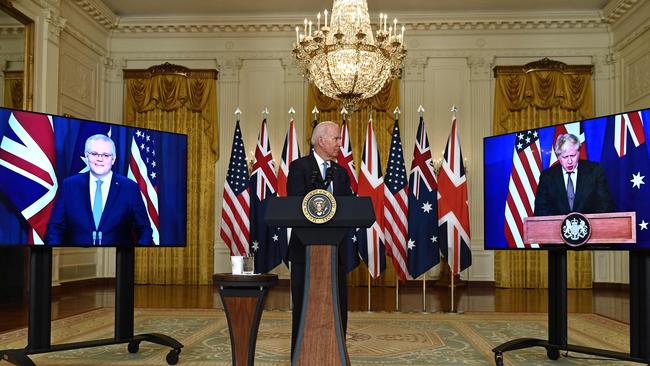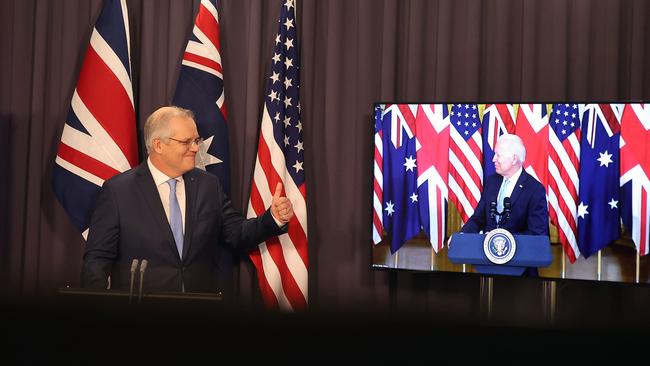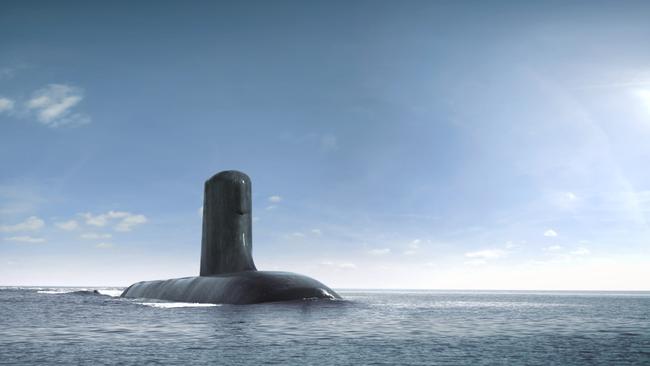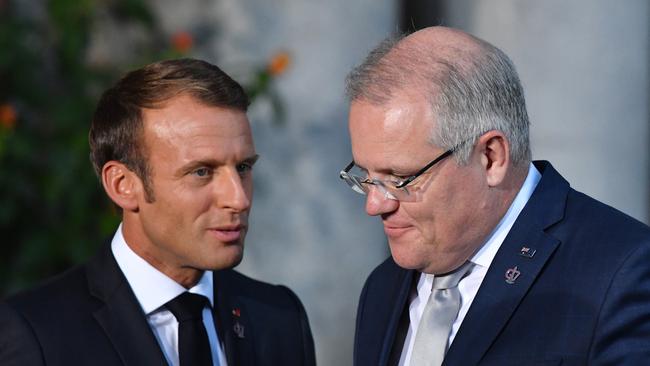What Australia’s nuclear submarine deal with US and UK means
Australia’s new nuclear submarine deal has changed everything for our nation and “there is no turning back” from this strategy.
World
Don't miss out on the headlines from World. Followed categories will be added to My News.
On a warm June evening at the spectacular Elysee Palace in central Paris, Prime Minister Scott Morrison had what would effectively be the “it’s-not-you-it’s-me” chat with Emmanuel Macron.
Those who were there described it as a long, very long, dinner between the French president and Morrison that while extremely amicable was pointed.
At the end of it both men knew the deal between their two nations for building the next generation submarines was sunk.
The 2016 contract, then the most lucrative defence deal in the world, was flawed thinking from the outset even if no-one was willing to admit it.
But it’s dumping is almost an aside, or a by-product of the bigger picture, which is a critical new alliance with the US and UK that will significantly not only reshape the Royal Australia navy but fundamentally alter Australia’s national security and defence posture.

In short, Australia is to finally get skin in the game of Indo Pacific security.
As was made clear to national Cabinet overnight, “there is no turning back” from this strategy course.
Bringing in a nuclear-powered submarine capability – a vessel that is faster, stealthier, more weaponised and more effective able to spend months at sea – is just the beginning of what will now be open, in a military tech sense, to share with Australia.
Already off the back of the nuclear powered submarine deal, the Australian Defence Force will receive Tomahawk Cruise Missiles to be fitted to our Hobart class destroyers, air-to-surface missiles with a 900km extended target range for F/A-18 and F-35A fighters, precision guided neutralising and suppressing missiles to be fired 400km capability and long range anti-ship missiles.

Then there will be a seat at the table for the US development of hypersonic capabilities (that’s five times the speed of sound), AI cyber tech, advanced quantum technology sharing and undersea drone technology.
The potential is endless.
Defence has formed a task force led by the highly regarded Vice Admiral Jonathan Mead and given him 12-18 months to work out which submarine we will get, likely to be the US Virginia class.
But through that time Australia is likely to have other discussions on what else we need.
Importantly too, with the know how Australia can establish a clear sovereign industry defence capability; as Covid has shown, when a crisis comes you cannot necessary rely on other nations to help fill our cupboards.
And why now?

Put simply, every indicator shows a deterioration in the security environment around Australia led in no small part to aggressive posturing by China notably at Japan and Taiwan and certainly coercive behaviour directed towards Australia and many other Pacific nations.
Make no mistake relations between Australia and France have not just soured but crashed. The PM has recognised his counterpart would have good reason to be angry.
In the words of France’s Foreign Affairs Minister Jean-Yves Le Drian, “it marks an absence of coherence that France can only observe and regret”.

But he’s in Europe, we are here in South East Asia where the trouble is brewing and with the exception of maybe the atolls of French Polynesia, Australia would never look to France to join a schoolyard scrap.
That scrap is more than likely to begin at sea, here on our doorstep.
The US however is already entrenched in the Pacific and through the AUKUS pact, it will now see Australia pull its weight in the region.
Currently Australia spends a little over 2 per cent GDP on Defence, this is expected to increase in the next Budget as Australia shapes up to expectations its defence now aided by the pact will increase.
Critically, all that is buys, trains for and is armed with is long range – keeping an enemy at arms length – although it’s a mute point with hypersonics that can strike before you can blink.
We have no reason to mourn the loss of the French deal, Australia’s expansive coastline can’t afford to dwell on legacy arrangements, costly as they may have been.
There was nothing particularly wrong with the proposed French designed Barracuda Attack-class submarine, it is just that it was no longer fit for purpose.
Morrison is unlikely to get another dinner invitation from Macron anytime soon, but that relationship will improve overtime, too much blood has already been spilt together in the trenches of World War I for it to disappear entirely.
More Coverage
Originally published as What Australia’s nuclear submarine deal with US and UK means


